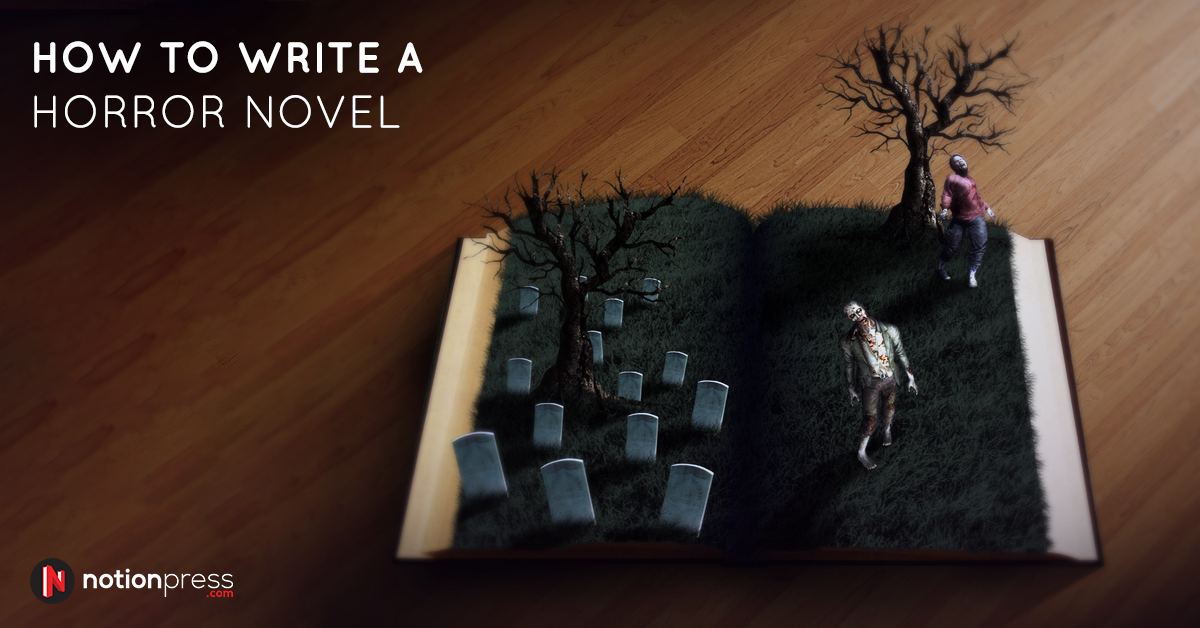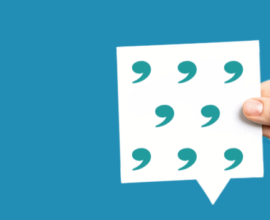How to Write a Horror Novel
How to write a horror novel
Are you a budding horror author looking to create a good horror story? Have you always wanted to write a novel that would scare your readers and leave them on the edge of their seats? If so, you can brace yourself to write horror. Here’s the ironic thing about horror novels: They are fun to read and even more so to write. Thinking up ideas for hair-raising scares and grotesque plot points may be easy but the tricky part is cooking up the formula that can blend all your scare tactics into one cohesive, terrifyingly terrific novel. Like most other genres, good horror novels require the right mix and match of ingredients- in this case, one that can create sensations of shock and paranoia in readers.
In this article, I will guide you on how to write a horror novel. Let’s get started.
- Come up with an idea for a story
- Choose a horror subgenre
- Make it personal
- Create believable and scary characters
- Establish suspense and tension early on in the novel
- Write graphic and disturbing scenes
- Use the setting to your advantage
- Employ effective storytelling techniques
- Make use of foreshadowing and clues to hint at upcoming scares
- Toy with your reader’s emotions
- Stay away from horror cliches
- Create a satisfying ending that will leave readers happy (or scared)
- Edit, revise, and proofread your work
- Find beta readers to help you improve your novel further
- Polish your work until it’s ready for publishing
- Publish your horror novel
- Market and promote your horror novel
Come up with an idea for a story
Ideas are the lifeblood of a good horror story, and coming up with an idea that is both original and exciting can be a challenge. However, there are a few tips for writing horror stories to increase your chances of success. First, have a clear idea of what you want to achieve with your story. Are you looking to scare the reader, or simply to create a sense of unease with a great horror story? Once you know what kind of effect you’re going for, you can start to brainstorm ideas that will fit that goal. Another tip is to look for inspiration in unexpected places. It’s often said that truth is stranger than fiction, so why not use real-life events as the basis for your horror story?
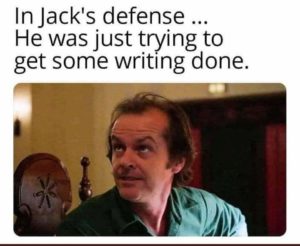
Finally, don’t be afraid to take risks while writing horror. Horror stories are all about pushing boundaries and surprising the reader, so go ahead and let your imagination run wild. With these tips in mind, you’re sure to come up with an idea for a horror story that is both original and exciting.
Choose a horror subgenre
When it comes to horror stories, there are endless possibilities for subgenres. From psychological thrillers to slasher films, there is something to suit every taste. However, with so many options available, how do you choose the right horror subgenre for your novel?
One of the first things to consider while writing a horror story is what kind of story you want to tell. Do you want to focus on suspense and tension, or do you prefer a more gore-filled approach? These are just some of the factors that can help to narrow down your choices.
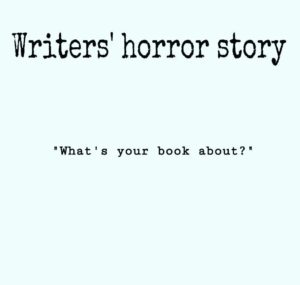
Another thing to keep in mind is what kind of atmosphere you want to create. Are you going for a dark and foreboding feeling, or do you want something that is more light-hearted and fun? Again, this will help you to decide which horror subgenre is right for your story.
Finally, consider your audience for horror stories. Who are you writing for? If you are aiming for a younger audience, then you will need to choose a horror subgenre that is appropriate for their age group. Alternatively, if you are writing for adults, then you can be more flexible with your choice.
Choosing the right horror subgenre for your novel is essential if you want to capture your reader’s attention. By taking the time to consider all of the factors mentioned above, you can be sure that you make the best possible choice for your story.
Make it personal
Everyone is aware of the classic trick horror stories use to increase the tension and fear in the audience- “Based on true events”. You’ll be surprised to know that when it comes to writing a horror novel, most authors base the plot on a real-life experience.

The experience is not an encounter with a ghost or creepy monster in the story; it is rather a moment in the author’s life that may have induced a lifelong fear or a profound experience of horror. Horror stories work best when you are honest in your writing; your readers will get that much-needed sense of immersion and connect with your storytelling on a personal level.
To create a good plot for a horror novel, you must be able to tap into your inner fears and fetch them down in a rough manuscript.
Once you’ve got the setting and backstory laid out, stitching your story together will be easy.
Create believable and scary characters
Creating believable and scary characters is essential if you want to write horror stories that will keep readers up at night. The best way to create believable characters is to base them on real people. Draw from your own life experiences, or those of people you know, to create complex characters with believable motivations and backstories.
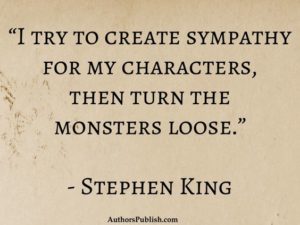
It’s also important to make sure your characters are relatable while you write a horror story- after all, no one wants to read about someone who is completely unlike them. Once you have believable characters, you can start to scare them – and your readers – by putting them in horrifying situations.
Whether it’s being stalked by a killer or being trapped in a burning building, putting your characters in jeopardy will keep readers on the edge of their seats. Just remember not to go too over the top – after all, the point is to make your readers scared, not sick.
Establish suspense and tension early on in the novel
One of the most important elements in a horror story is suspense. suspense is what keeps readers turning the pages, eager to find out what happens next. By establishing suspense early on in the story, authors can ensure that their readers will be fully engaged from start to finish.
There are many ways to create suspense while you sit down to write a horror story. One is to leave key details about the setting or characters unexplained. This encourages readers to keep reading to discover the missing information.
Another way to create suspense is to introduce a series of seemingly innocuous events that gradually build tension and foreshadow future horrors. By carefully crafting suspenseful scenes, authors can keep their readers on the edge of their seats throughout the entire novel.
Write graphic and disturbing scenes
One of the most important aspects of writing a successful horror novel is creating graphic and disturbing scenes. This not only provides entertainment for the reader but also helps to create suspense and tension. When done effectively, graphic scenes can be some of the most memorable and talked-about moments in a book. However, there are a few things to keep in mind when writing these types of scenes. First, it is important to be aware of your audience.
If you are writing a horror story for a younger audience, you will want to avoid graphic violence and sexual content. Secondly, it is important to ensure that the graphic elements serve a purpose. For example, if you are trying to create a feeling of suspense, you will want to focus on elements that are unexpected or surprising.
Finally, it is important to make sure that the graphic details in a horror story are believable. This means avoiding unrealistic or over-the-top gore. By following these tips on how to write a horror story, you can ensure that your graphic scenes are both effective and appropriate for your audience.
Use the setting to your advantage
The setting is one of the most important elements to consider when you navigate how to write a horror story. After all, it sets the stage for the suspenseful, spine-tingling events to come. But how can you use the setting to the best advantage to write your own horror story?
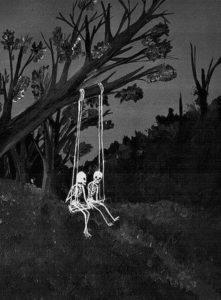
Here are a few tips:
First, choose a setting that will be truly engaging for your readers. A well-chosen setting can make all the difference in whether or not your readers will be compelled to keep reading.
Second, use the setting to create a sense of suspense and unease. A good horror story should make your readers feel like they’re on the edge of their seats, waiting in anticipation for what’s going to happen next. The right setting can help you achieve this by establishing a feeling of foreboding and dread.
Finally, don’t forget to use the setting to provide clues and clues about the mystery at the heart of your story. A carefully chosen setting can be used to drop subtle hints about what’s really going on, adding another layer of excitement for particularly astute readers.
By following these tips, you can use setting to take your horror story to the next level!
Employ effective storytelling techniques
As any seasoned horror writer knows, effective storytelling is essential to creating a truly chilling tale. After all, what good is a horror story if it isn’t able to send a shiver down the reader’s spine? Luckily, there are several tried and true techniques that can help you add an extra layer of fear to your work. One such technique is foreshadowing. By hinting at upcoming events, you can create a sense of unease and tension that will keep readers on the edge of their seats.
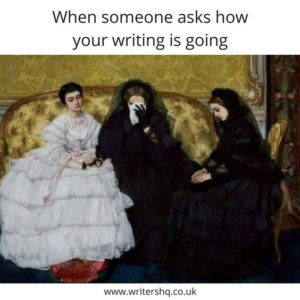
Additionally, the effective use of suspense becomes crucial in how to write a horror story since it can also be effective in building tension and creating an atmosphere of fear. Lastly, don’t be afraid to go for the gross-out factor. There’s nothing like a few well-placed gore details to turn up the scares! By employing these effective storytelling techniques, you can be sure that your horror novel will be one that readers won’t soon forget.
Make use of foreshadowing and clues to hint at upcoming scares
When you look at empowering answers to the question of how to write a horror tale that leaves an indelible impact, you look at foreshadowing. By carefully planting clues and hints when you start how to write a horror tale, an author can ratchet up the tension and anticipation until it reaches a boiling point. When done well, foreshadowing can make the jump scares all the more effective, leaving readers both exhilarated and terrified.
The steps to foreshadowing
There are a few key steps to foreshadowing effectively. First, it’s important to establish a sense of unease early on in the story. This can be done through foreboding descriptions of the setting, creepy characters, or foreboding dialogue. Next, the author needs to keep planting clues as the story progresses, making sure they are subtle enough to be missed in the first reading. Finally, all of the threads should come together in a chilling climax that leaves readers truly scared.
With these steps in mind, any author can learn to use foreshadowing to create a truly spine-tingling horror.
Toy with your readers’ emotions
Even though you are set to write a horror novel, don’t make it entirely about horror. Keep your readers engrossed by mixing elements of humor, romance, and action. Doing so helps your toy with the reader’s emotions; one minute they could be laughing at a joke cracked by your character and the next minute, totally freaked out due to an unsuspecting and horrific event.

Shock, dread, and paranoia are the three emotions you have to master in creating while structuring your novel. You can choose to develop the emotion as part of your character’s personality or entwine it in the setting itself.
Stay away from horror clichés
Horror thrives on its unpredictable nature, but over the years, the rinse-and-repeat formula seen in books and movies alike has made horror lose its ghastly charm. Here are some horror clichés:
- “It’s behind you.”
- Body snatching aliens
- Mad scientists doing terrible experiments on humans
- The cabin in the woods
- Running in the dark
- Religious propaganda goes wrong
- The living dead
We’re not saying that you have to avoid using any of the clichés mentioned above completely; it’s better to try and work on those elements and cook up your horrifying scenario.
Create a satisfying ending that will leave readers unsettled
A satisfying ending is essential to any good story. It’s the moment when everything comes together and the reader finally understands what’s been going on. A satisfying ending can be scary, but it should always leave the reader feeling something.
Scary endings are particularly satisfying because they tap into our primal fears. We’re hardwired to be afraid of things that go bump in the night, and a good scary story plays on that fear. The best scary endings are unexpected, but they should also feel inevitable in retrospect. They should make the reader think, “Of course, that’s what happened. I should have seen it coming.”
If you’re planning to write a spooky story, remember that a satisfying ending is essential. Take your time to build up a creepy atmosphere and create believable characters. And don’t be afraid to go for the jugular – sometimes, the most shocking endings are the most satisfying ones.
Edit, revise, and proofread your work
Editing your horror novel is an essential step in the publishing process. It’s important to take the time to edit, revise, and proofread your work so that it’s the best it can be. Here are some tips for editing your horror novel:
- Read through your work carefully, looking for any errors or inconsistencies. Make sure there are no plot holes or unanswered questions.
- Revise your work, making changes as necessary. This is the time to flesh out your characters and tighten up your story.
- Have someone else read through your work and offer feedback. It’s helpful to get a fresh perspective on your story.
- Once you’re happy with your story, it’s time to start proofreading. Look for any typos or grammatical errors. Make sure everything flows smoothly and makes sense.

By taking the time to edit, revise, and proofread your horror novel, you’ll ensure that it’s the best it can be when you publish it.
Find beta readers to help you improve your novel further
Any good writer knows that beta readers are essential for improving a novel. Not only do they provide valuable feedback, but they can also help to identify potential problems. However, finding beta readers can be a challenge, especially if you’re not sure where to look.
One of the best places to start is online forums dedicated to writers and writing. Here, you’ll find beta readers who are eager to help new authors perfect their craft. Another great option is to join a writers’ group. These groups typically have members who are willing to read and offer feedback on each other’s work.
In addition, many beta readers are also happy to provide constructive criticism via email or social media. By utilizing these resources, you can be sure to find beta readers who will help you take your novel to the next level.
Polish your work until it’s ready for publishing
As any writer knows, the first draft of a piece is rarely the best version. To create something truly special, polishing and editing are essential.
Rewriting can help to improve the flow of a piece, clarify your ideas, and add new layers of dimension and complexity. It can be tempting to rush through this process to get your work published as quickly as possible. However, taking the time to refine your work can make all the difference.
After all, publishing is not simply about getting your work out there – it’s about creating something that will resonate with readers and leave a lasting impression. So don’t be afraid to put in the extra effort to polish your work until it shines. It will be worth it in the end.
Publish your horror novel
If you’re a horror fan, there’s nothing more exciting than publishing your very own horror novel. But what’s the best way to go about it? Should you try to find a traditional publishing house, or should you self-publish?
There are advantages and disadvantages to both options. If you go the traditional publishing route, you’ll have the benefit of working with professionals who can help polish your novel and get it ready for publication.
However, it can be difficult to find a publisher who’s willing to take a chance on a new author, and even if you do find one, you may not have much control over how your book is marketed and sold.
Self-publishing, on the other hand, gives you complete control over your book. You can decide when and how to publish it, and you don’t have to worry about finding a publisher who’s interested in your work.
Of course, self-publishing can be a lot of work, and it can be tough to get your book noticed in a crowded market. But if you’re willing to put in the effort, self-publishing can be a great way to get your horror novel into the hands of eager readers.
Notion Press offers self-publishing services to authors and strives to democratize the sphere of publishing. Every story finds its voice with Notion Press. Aspiring authors can avail of valuable services from Notion Press including formatting their book, designing covers, distribution, and sales.
Market and promote your horror novel
If you’re not sure where to start, don’t worry – we’ve got you covered. Here are some tips to get you started:
- Social media is your friend. Create a profile for your book on all the major platforms and start sharing excerpts, teasers, and behind-the-scenes content. Be sure to use relevant hashtags so that people can find your content easily.
- Get involved with the horror community online. There are tons of forums, groups, and websites dedicated to horror fans. Join the conversation and share your love of all things creepy and crawly.
- Host a contest or giveaway. Offering free books or other prizes is a great way to generate buzz about your book. Just be sure to promote the contest widely so that you reach as many people as possible.
- Make use of blog tours and guest posts. This is a great way to reach new audiences and get people talking about your book. Reach out to blog owners in your genre and offer to write a guest post or participate in a tour.
Following these tips will help you get the word out about your horror novel and hopefully attract some new fans!

